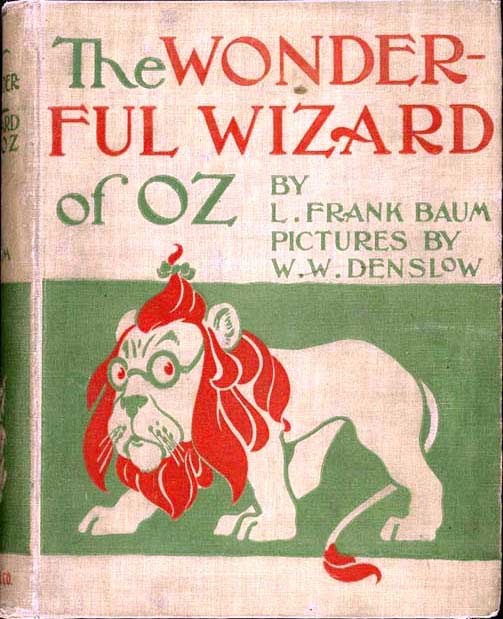“The Wizard of Oz” has been an essential part of out, gay Philadelphia resident Ryan Bunch’s life for 35 years. Bunch, who grew up on a farm in Louisiana, was in third grade when he first saw the 1939 film starring Judy Garland on TV during its annual broadcast. He soon found L. Frank Baum’s books in his local library and became obsessed. He also discovered the International Wizard of Oz Club in 1985 and started going to regional conventions and eventually national ones. Bunch now serves as the vice president of the Oz Club.
Illustrations by W.W. Denslow
In a recent phone interview, he explained the appeal of “Oz” for him. “I found the books enchanting; I liked to spend time in the make-believe world of Oz. I grew up on a farm, and I was always different and a misfit. I read and played piano. Reading and fantasy were an escape for me.”
He continued, “The ‘Oz’ books are very American in their topography — cornfields, wide-open spaces, scarecrow images — and they seemed real to me rather than a European fairy tale, that something magical could happen in my everyday life. I think the utopian ideas resonate with the queer experience, too; the idea of escaping to a place where you can be different and find your community. Oz becomes a metaphor of that aspect of the queer experience.”
Bunch claimed that he has seen the film and read the book(s) countless times, but he said he never gets tired of, “Going back to Oz and returning to this magical, utopian world. I notice new things each time.”
He confessed, “I enjoy Margaret Hamilton’s part of the movie more than any other.” And when he watches the film now, he said he pays close attention to Judy Garland’s facial expressions, often finding details he never noticed before.
Bunch recently had the opportunity to revisit the book, as part of an online project spearheaded by Dina Massachi, one of the Oz Club members. Massachi created a series of videos of people each reading a different chapter of the book. Bunch was assigned Chapter 2, “The Council with the Munchkins,” and he was pleased with the selection. He effused, “It is a good chapter. Dorothy arrives in Oz and gets the silver shoes [ruby slippers in the movie, of course] — the powerful magical objects that resolve the story and symbolize that she always had the means to get home.”
Bunch continued to explain the appeal of the books, “It has more episodes, and is a more leisurely journey. The book is very straightforwardly written. The film has a campy, theatrical style. The book is folkloric, with a repetition of ideas and three phases of the journey. Baum was writing a ‘modern fairy tale’ when he wrote the book. It creates this world, and they expand this built universe and the land of Oz in the subsequent books. It becomes an experienced fictional world.”
Bunch owns a few early editions of the books, and admitted he is, “Not a huge collector; I am more of a scholar. When I was a teenager, I collected a lot of things. I have kitschy memorabilia from the late ‘80s and ‘90s, when the film had its 50th anniversary, but my long-term interest is early editions of the books. I don’t have a first edition, but I have some from the early 20th century that have color plates and nice illustrations.”
“The Wizard of Oz,” by L. Frank Baum, was first published in 1900 and illustrated by Philadelphia native W.W. Denslow. They were living in Chicago at the time. Bunch explained, that after the first book, there are many Philadelphia connections, “The second book came out with illustrations by John R. Neill, who was a Philadelphian. That was because one of the publishers was from Philadelphia. Philadelphia was the center of publishing at the time, so the talent came from here. Especially illustrators.” Philadelphia native Charles Santore was another illustrator of the books.
He added, “When Baum died, the series was so popular and lucrative, the publishers wanted to continue it. So, they got Ruth Plumly Thompson to write a new ‘Oz’ book. It was first published it under Baum’s name, and said to be ‘assembled from his notes,’ but it was entirely hers. With her second book, she got credit. Philadelphia was the place where the legacy of Oz continued.”
Thompson wrote 19 of the 40 official “Oz” books; Baum only penned 14. Bunch and the Oz Club helped commemorate Thompson’s contribution to the series. In 2018, they helped erect a historical marker at 254 South Farragut Street, in West Philly, where she lived and wrote.
For information on the Oz Club, visit, https://ozclub.org/



